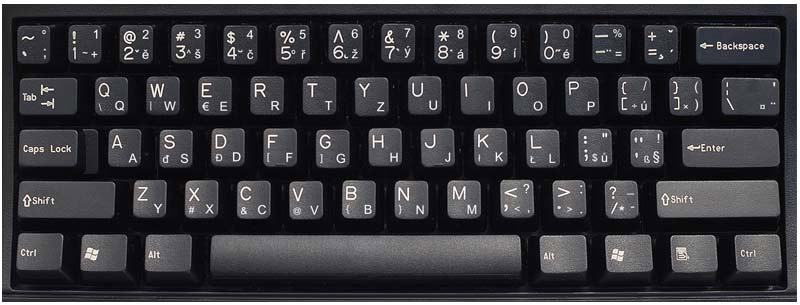QWERTY Keyboard is a fast and accurate typing keyboard. QWERTY Typing Keyboard enables you to type in the QWERTY language, so no need to install any software. You can use your computer keyboard or mouse to type QWERTY letters with this online keyboard. About typing lessons for Qwerty keyboard - Qwerty keyboard was great when people were using typewriters. Today computer keyboard do not need Qwerty layout. Learning to type Qwerty style is an effort to be backward compatible. If you don't know why to learn typing Dvorak or why was Dvorak keyboard layout developed. Compact, fully-functional wireless (non-bluetooth) QWERTY keyboard for home, office, or remote work Sound-dampened keys makes working in quiet environments less disruptive Includes numeric key pad and 12 multimedia hot keys Powered by 2 AAA batteries; transmits data securely via USB receiver with 128-bit AES encryption.

Qwerty Keyboard Computer Hope

The first time I heard the lie, I was in fifth grade. Mr. Ward took me aside (or maybe he told the whole class, it was a long time ago) to tell me about the wonders of Dvorak, a different keyboard layout that was scientifically designed to be more efficient than the standard layout. That layout was called QWERTY, he explained, and it had been created to slow typists down. You see, in the olden days, mechanical typewriters could jam if people hit the keys too quickly, so they had to put the common letters far apart from each other. The modern keyboard, I was told, was a holdover of the mechanical age.

Since then, I've heard this story repeated a thousand times. So many times, I had assumed it was true. But Jimmy Stamp over at Smithsonian points to evidence released by Japanese researchers that, in fact, the story is bunk. The QWERTY keyboard did not spring fully formed from Christopher Sholes, the first person to file a typewriter patent with the layout. Rather, it formed over time as telegraph operators used the machines to transcribe Morse code. The layout changed often from the early alphabetical arrangement, before the final configuration came into being.
The researchers tracked the evolution of the typewriter keyboard alongside a record of its early professional users. They conclude that the mechanics of the typewriter did not influence the keyboard design. Rather, the QWERTY system emerged as a result of how the first typewriters were being used. Early adopters and beta-testers included telegraph operators who needed to quickly transcribe messages. However, the operators found the alphabetical arrangement to be confusing and inefficient for translating morse code. The Kyoto paper suggests that the typewriter keyboard evolved over several years as a direct result of input provided by these telegraph operators.
That is to say, the lesson of the QWERTY story remains the resilience of a design created for an outmoded technology's dictates. QWERTY is still an example of technological momentum. But the development of the design wasn't accidental or silly: it was complex, evolutionary, and quite sensible for Morse operators.
Keyboard configurations are newly important as we think about how we should type on tablets and other devices. The calling card of the personal computer was the keyboard, and now, we are carrying around pieces of glass on which we simulate the old QWERTY design. Are we going to keep that layout going? Perhaps QWERTY will always be good enough. But if not, how might a new design develop?
Qwerty Computer Keyboard Download
Recommended Reading
Qwerty Computer Keyboard
Fish Sticks Make No Sense
Ute Eberle and Hakai Magazine


Comments are closed.